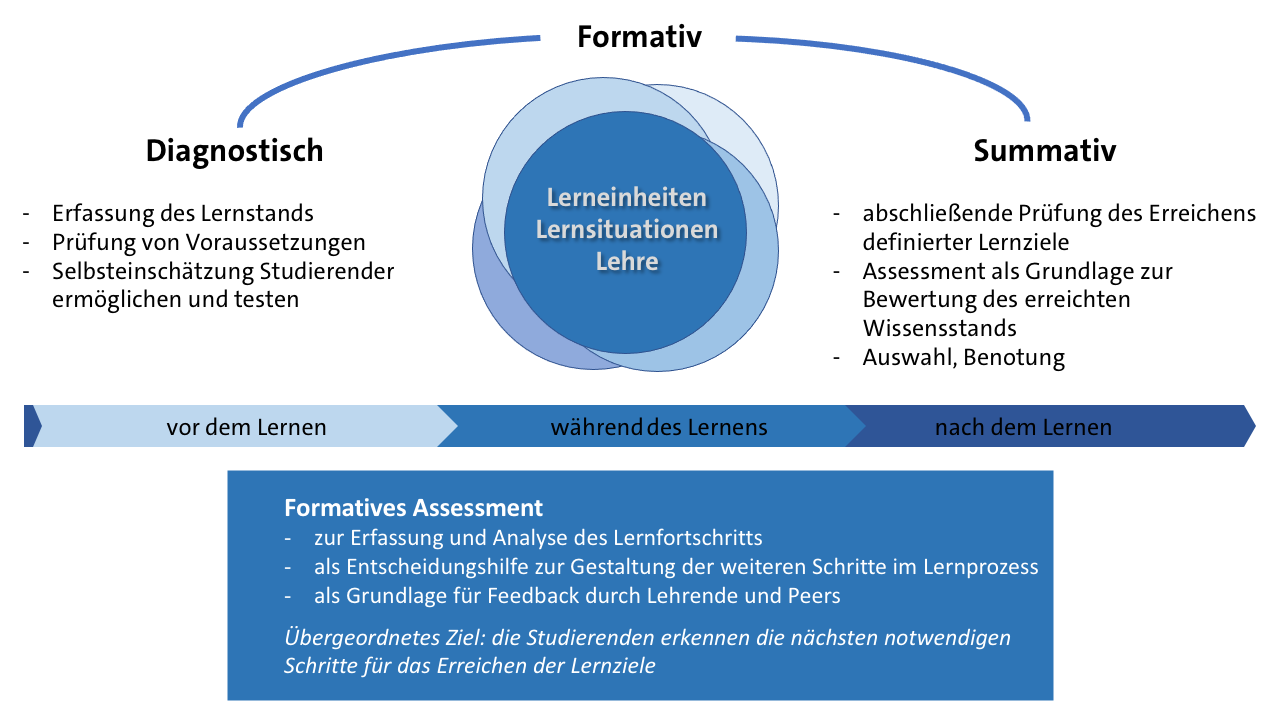Functions of E-Assessment
One of many ways to determine the functions of e-assessments arises from the temporal perspective of the assessment in relation to the respective learning unit. Based on the timing of the execution of the assessment within a semester, three functions can be distinguished.

Before a learning unit: Diagnostic
Here, the learning status can be assessed, often through a self-assessment procedure (e.g., using digital flashcards), to check whether students meet the prerequisites for a learning unit. This also allows for the identification of gaps that the instructor can later address in a teaching-on-demand approach.
During a learning unit: Formative
Formative assessments "are understood more as ongoing support and accompaniment of the learning process" (Fröhlich-Steffen/den Ouden 2019: 18) during a learning unit. Therefore, they are also referred to as process-oriented assessments.
In this context, the 'assessed' person can use self-directed feedback to determine and monitor their learning progress, as well as reflect on their own learning method. Educators can also use formative assessment feedback to understand students' learning status and adjust learning content accordingly. Assessments that are formative are often applied as self-assessments (as per Michel 2015: 15).
The focus is not on evaluating a student's performance, but rather on providing feedback. This is crucial for learning and success in learning through self-assessments. The type of feedback does not have to follow a simple right/wrong scheme. Various forms of extended feedback are also possible.
According to current research, formative feedback can only be effective when the learning process is aligned by both students and educators (as stated by the Center for Educational Development, RUB, n.d.: 5). In addition to self-assessments, formative assessments can include, for example, moderated group discussions or learning portfolios.
After a learning unit: Summative
Summative assessments take place at the end of a learning unit or learning progression. They place "higher demands on objectivity, reliability, and validity" (Schaper et al. 2012). This includes examinations such as (e-)exams, take-home exams (THE), or oral exams (via video chat) that are conducted at the conclusion of a learning unit and grant qualification. Thus, a decision can be made as to whether the learning unit has been successfully completed or whether the prerequisites for enrolling in another module are met.
The focus here is on the verification and evaluation of learning objectives by the educators. Following the approach of constructive alignment, however, students should already be informed at the beginning of the semester about the examination format they can expect. This allows students, for instance, to become familiar with the learning platform and question types through corresponding practice exams in the case of an e-exam (Hoffmann/Sauer 2018: 7). However, "the potential of examinations to support the learning process and to become a constructive part of the learning process" is rarely utilized (Müller/Schmidt 2009: 30).
